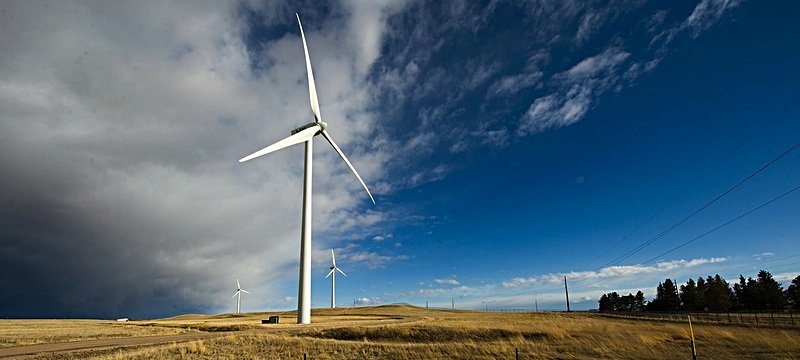The Global Wind Day is celebrated worldwide, annually on 15 June. This event is coordinated by EWEA (European Wind Energy Association) and GWEC (Global Wind Energy Council) through a network of partners, and the purpose of this day is to discover wind, its power and the possibilities it holds to change our world. This year it will focus on energy independence around the world and how wind energy can help.
Currently, countries all over the world are banking on renewable energy as an alternative to fossil fuels, that comes from resources which are naturally replenished on a human timescale such as sunlight, wind, rain, tides, waves and geothermal heat.
Today is the Global Wind Day so, in this article, we will focus on the wind energy, and probably there are some facts about this form of energy that you don’t know. Let’s learn a little more about this renewable energy with interesting facts about wind energy.
1.
The wind power is the conversion of wind energy into a useful form of energy. It can be harnessed in different ways, such as using wind turbines to produce electrical power, windmills for mechanical power, windpumps for water pumping or drainage, or sails to propel ships.
2.
The wind energy is a renewable and clean energy source.
3.
The wind energy is plentiful, widely distributed, produces no greenhouse gas emissions during operation and uses little land.
4.
The wind energy has high construction cost, but its benefits for ecology make wind energy very acceptable energy source.
5.
The wind energy can be very soon the cheapest way to produce energy on the large scale, of course in areas with suitable climate conditions.
6.
The wind energy is very competitive when compared to some other energy sources because it’s pollution-free.
7.
A wind turbine is a device that converts kinetic energy from the wind into electrical power. A large turbine is a horizontal axis wind turbine having an upwind rotor with three blades, attached to a nacelle on top of a tall tubular tower.
8.
The large blades of wind turbines can interfere with some radar systems used by weather stations or air traffic controls, at times being mistaken for planes or various weather patterns.
9.
A single wind turbine can power 500 homes.
10.
Modern wind turbines usually have 3 blades which can reach speeds at the tip of over 320 kph (200 mph).
11.
The tips of large wind turbines can reach heights up to 200 m (650ft).
12.
Modern wind turbines can produce 15 times more electricity than the typical turbine did in 1990.
13.
The windmills have been around for a long time, they were used in Persia (now Iran) as far back as 200 B.C.
14.
The wind farms are large groups of wind turbines which are connected to the electrical power transmission network. A wind farm may also be located offshore.
15.
Wind turbines can be installed offshore on floating structures, sending the electricity generated back to land with the help of undersea cables.These installations can use the more frequent and powerful winds that are available in these locations and have less aesthetic impact on the landscape than land based projects. However, the construction and the maintenance costs are considerably higher.
16.
As of August 2013, the London Array in the United Kingdom is the largest offshore wind farm in the world at 630 MW. This is followed by the Greater Gabbard Wind Farm (504 MW), also in the UK.
https://youtu.be/ra6sogF4lLE
17.
The wind energy is currently the fastest-growing segment of all renewable energy sources.
18.
In 1997 wind power generated only 0.1% of the world’s electricity, this increased to 1.5% in 2008 and 2.5% in 2010.
19.
The wind energy is more exploited in Europe than in America, because of favorable climate conditions and because of USA traditional relying on fossil fuels.
20.
The wind energy theory was discovered in 1919 by German physicist Albert Betz and published in his book Wind-Energie.
21.
As of 2011, 83 countries around the world were using wind power on a commercial basis.
22.
Several countries have already achieved relatively high levels of penetration, such as 28% of stationary (grid) electricity production in Denmark (2011),19% in Portugal (2011), 16% in Spain (2011), 16% in Ireland (2012) and 8% in Germany (2011).
23.
A weak point of the wind energy is the changeability of wind speed. Since wind speed is not constant, a wind farm’s annual energy production is never as much as the sum of the generator nameplate ratings multiplied by the total hours in a year.
24.
The wind energy can provide us with cleaner air and much healthier environment. It should be considered as the long-term energy source.
25.
The wind energy can be good alternative to nuclear energy in areas with favorable climate conditions.
